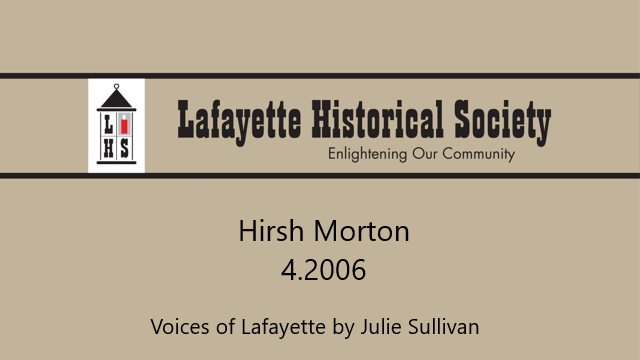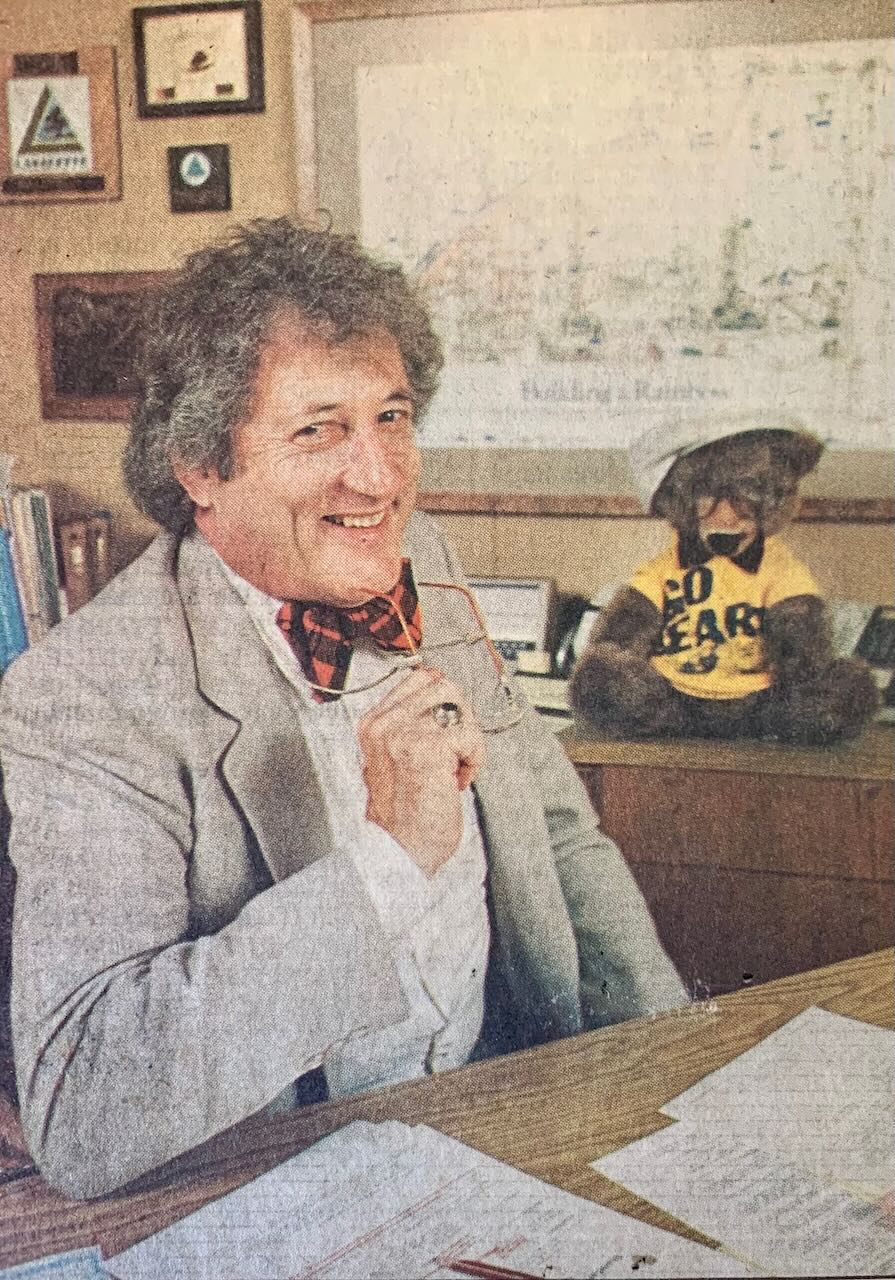Summary:
Hirsh Morton was interviewed by Julie Sullivan in April, 2006. Hirsh came to Lafayette in 1952 as the designer for well-known builder Jack Marchant. Later he operated an architectural firm in partnership with Frank Essert. Hirsh served on the city planning commission, and he also sought out opportunities to contribute his services to public projects. He was named Lafayette Citizen of the Year in 1984.
Oral History:
“When you design a home for someone, you become part of the family if you’re doing a good job.” Hirsh Morton describes his life-long profession. Born in Boston, he graduated from high school in Florida. At age sixteen he started working for an architect. “I got a T-square and a triangle as my pay.” After serving in the Army in World War II and receiving the purple heart and bronze star, he entered UC Berkeley. He received a B.S. in architecture in 1952 and also met his future wife, Ellen. The couple has two sons, two daughters and three grandchildren.
“I started drawing portraits when I was eleven years old,” Hirsh recalls. “I wanted to work for Disney, but my dad said I’d never make anything doing that, so why didn’t I become an architect. Once I got into it you couldn’t talk to me about anything else.”
Hirsh came to Lafayette in 1952 as a designer for Jack Marchant, the well-known builder. He took over from Frank Essert, who would become his future partner. “I worked for Jack for five years, and he treated me like a son,” Hirsh says fondly. “I called his houses Ranchburger. He only let me do one contemporary house, and it took a while to sell. He said, ‘I told you so.’ I thought the $30,000 he was asking for houses back then was an awful lot. I was amazed people would pay that much.” Jack’s brother, Paul, was killed in a private plane crash. Hirsh was supposed to be with him but couldn’t make it.
“The years I worked for Jack didn’t count toward my architect’s license,” Hirsh explains. “When I told him I was leaving, he said, ‘You’ll never make this kind of money again,’ and he was right. I started with a firm in Oakland for $2.75 an hour. But I worked nights on my own business in Lafayette.”
In 1959 Hirsh and Frank Essert opened Essert and Morton on Mt. Diablo Boulevard. They did a mix of residential and commercial business, including Doctor’s Park on Ygnacio Valley Road in Walnut Creek, the Loire Court building, Uncle Yu’s restaurant and the Butler- Conti showroom in Lafayette. “My favorite project never got built,” he says with a smile. “Peter Bedford’s Town Center was exotic. It was to be on the BART block (the property adjacent to Citibank which was eventually developed in the early 2000’s). There was a creek that we were taking under the building. Charles Moore, a famous Texas architect, did the conceptual drawings, and I was honored to be chosen to do the working drawings. I worked on the project for several years around the late 1980’s, before it was abandoned when real estate took a downturn.
“We probably designed several thousand houses. I felt like giving beauty back to Lafayette. It was the place I wanted to be.”
In 1970, Hirsh and his wife bought an acre in Lafayette and built their dream home. They lived there until 1984 when they moved to Rossmoor. Hirsh designed the plans for the remodel of their current home in Martinez, where they live with their son.
When Frank Essert retired in 1982, the firm numbered thirteen employees. Hirsh sold out to Tim Ward of Ward Young Architects in 1996.
Hirsh is proud of his service as a Boy Scout leader, as well as his years on the city Planning, Sign and Environmental Review Commissions. “I used to flip pancakes at the Kiwanis breakfasts, too,” he adds. In 1984 he was named Lafayette Citizen of the Year. He donated the design for the gazebo on Mt. Diablo Boulevard which was completed in 1987. He was infamous for riding around town with a stuffed panda on the front seat of his car. “When Dean Lesher (humanitarian and former owner of the Lesher Newspapers) presented the Citizen of the Year plaque to me, my stuffed panda was beside me,” Hirsh says with a grin.
Hirsh’s hobbies are sculpture and photography, and his home is filled with his whimsical animal sculptures, including a gorilla playing a piano, and his colorful photos. He wears bracelets and rings of silver and turquoise, a stone he fell in love with in the Southwest. “Blue is my favorite color. All architects love some shade of blue,” he explains. “I really like the people of Lafayette. People might have had a lot of money, but they were down to earth. What Lafayette needs is more senior housing. The people have aged. I would have stayed in Lafayette if they had senior housing.”
Excerpted from “Voices of Lafayette” by Julie Sullivan. This book is available for purchase in the History Room.



Thank you for the history on my father
I really enjoyed working in your dad’s architectural firm from 1977 to 1983. He was a great mentor and a wonderful person.